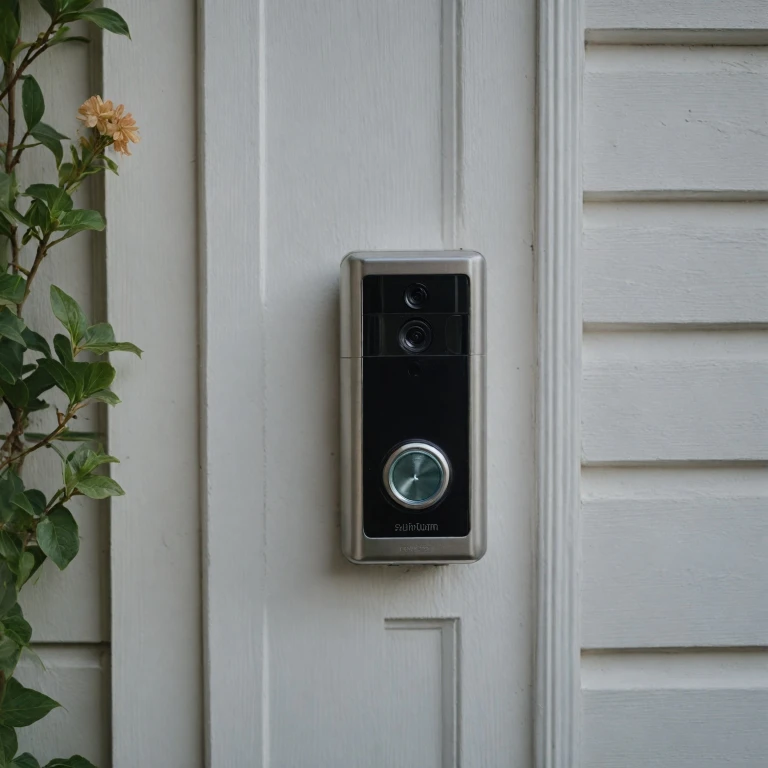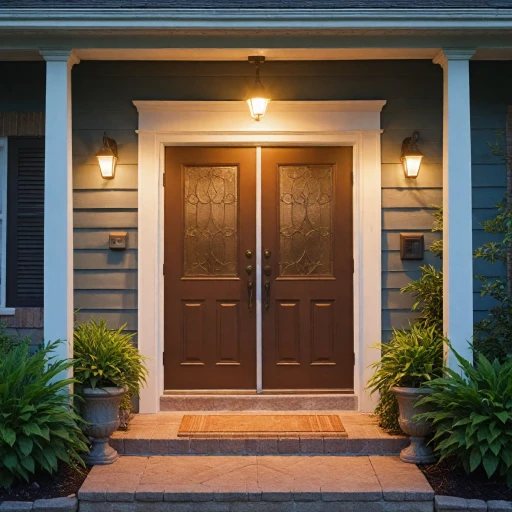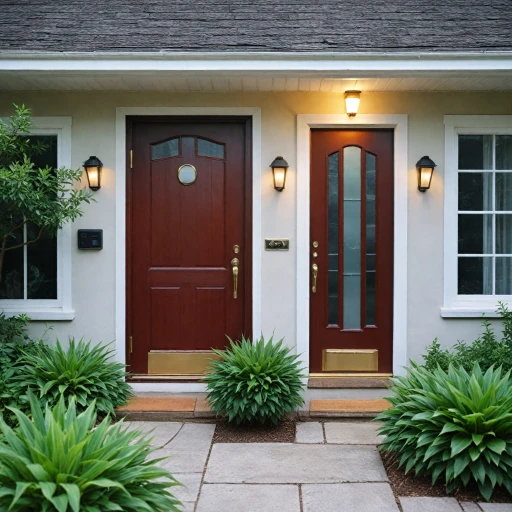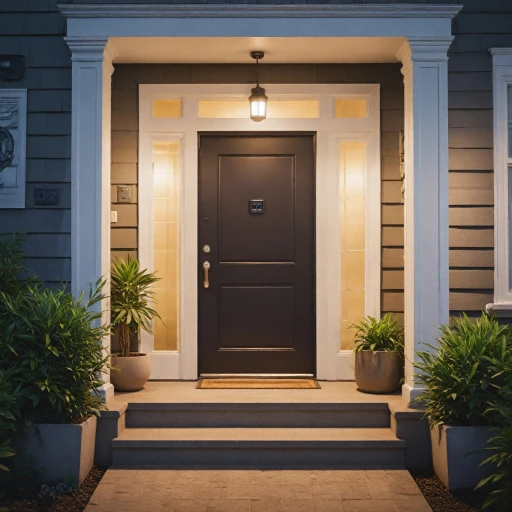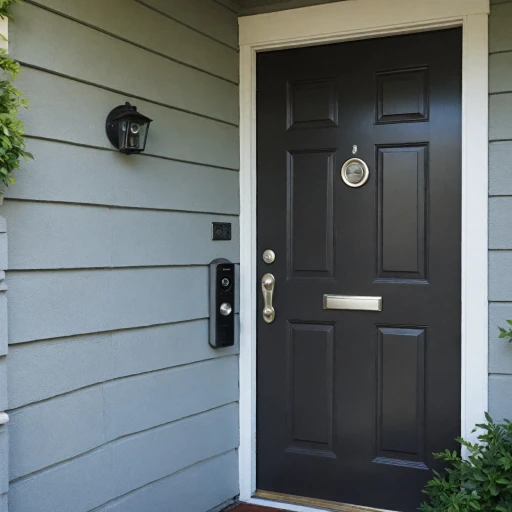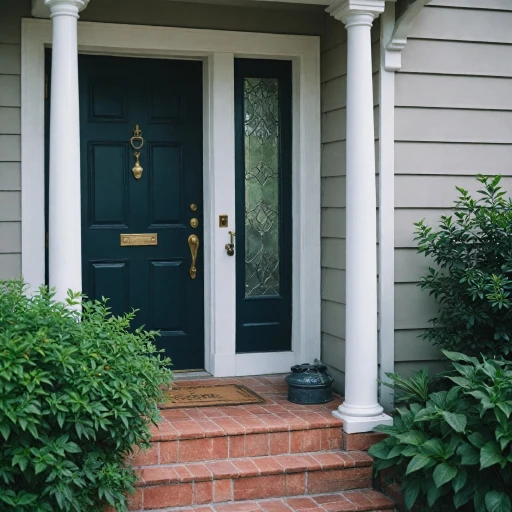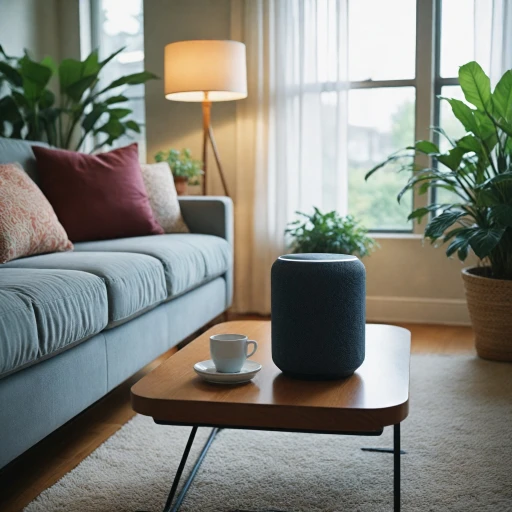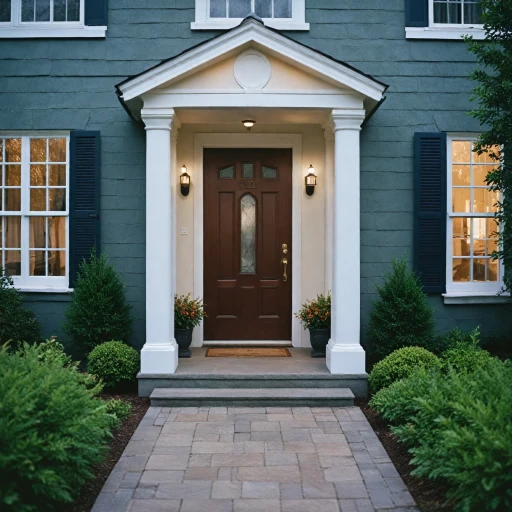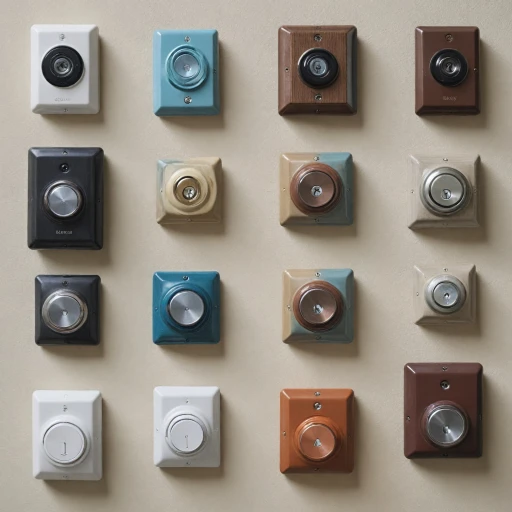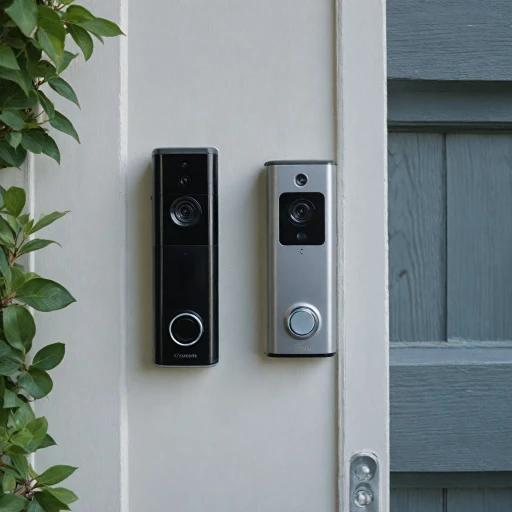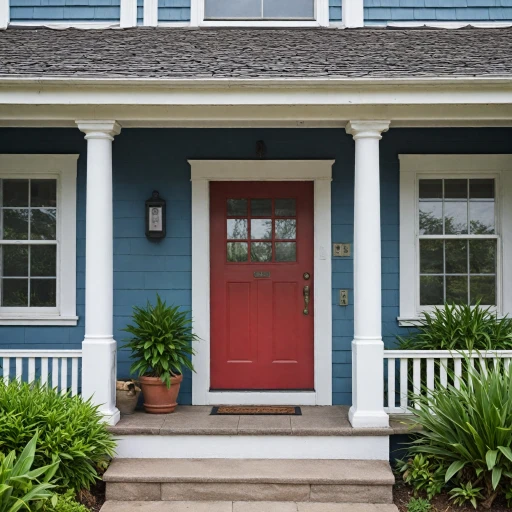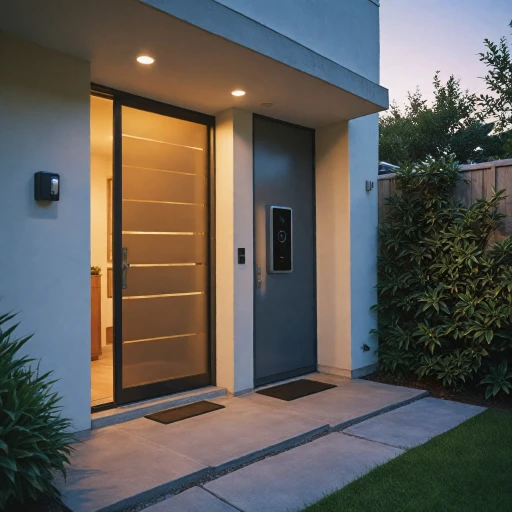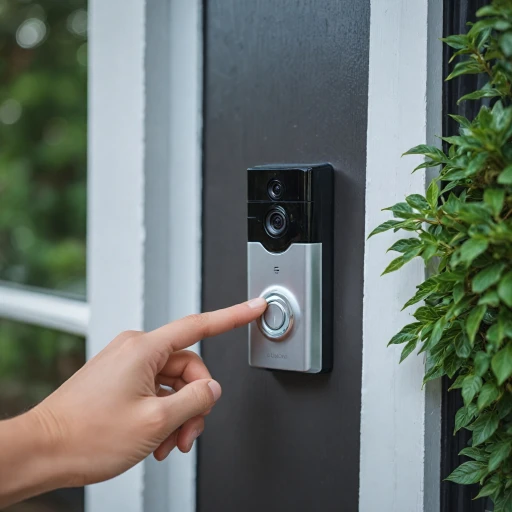
What is Door Contact in Smart Doorbells?
The Basics of Understanding Door Contact
At its core, a door contact in smart doorbells is a vital sensor designed to enhance the security of your home. This product uses a magnetic mechanism to detect when a door or window is opened or closed, thereby integrating with your home's security system to alert you promptly.
Essentially, the sensor is composed of two parts: a magnet and a switch, working together to form a contact. When the door or window is closed, the sensor and magnet align, and the switch remains closed. If the door or window opens, this contact breaks, triggering an alarm or an alert through the smart system.
Door contacts are generally available in two types: surface mount and recessed door. Surface-mounted door contacts are visible and easier to install, while recessed contacts are hidden within the door frame, providing a more aesthetically pleasing look.
For those looking to upgrade their home security, the choice between different smart doorbell systems will often include considerations of these contact sensors. Many top-rated options found on sites like Amazon showcase advanced features such as real-time alerts, wireless connectivity, and access control.
Consequently, door contacts form an integral part of any comprehensive alarm window and intrusion detection strategy, seamlessly collaborating with doors and windows to ensure that your home's safety is always under control.
Benefits of Door Contact for Home Security
Enhancing Home Safety with Contact Sensors
Incorporating door contact sensors into your home security arsenal offers a multitude of benefits, reinforcing the safety of your household. These sensors detect the real-time status of doors and windows, providing an added layer of intrusion detection by alerting you whenever a door is opened unexpectedly.- Real-time Alerts: As part of a comprehensive security system, door contacts can instantly notify you when a door or window is accessed. This function not only aids in preventing unauthorized access but also keeps you informed about your home’s status.
- Compatibility with Alarms: Many smart doorbells with integrated contact sensors work seamlessly with alarm systems. This fusion ensures that an alarm is triggered if an entry point is breached, offering peace of mind whether you’re at home or away.
- Energy Efficiency: These sensors optimize energy usage with their ability to wirelessly control connected devices. For example, they can automate lighting systems to activate when a magnetic door is opened, offering both security and economic benefits.
- Flexible Product Options: Available as surface mount or recessed door options, they evolve to meet varying needs. Products with reed switch mechanisms offer a robust solution for detecting unauthorized access, highlighting how versatile these security components can be.
How Door Contact Works with Smart Doorbells
How Door Sensors Interface with Your Smart Doorbell
Door contacts play a crucial role in enhancing your smart doorbell setup by providing real-time notifications and security. These small yet powerful devices form part of the broader security system, serving as a bridge between traditional door mechanisms and advanced smart technology. They operate through a combination of sensor magnets and reed switches, creating an intricate network to ensure safety and functionality.
The basic principle revolves around a paired sensor and magnet setup, usually involving a door window or door frame arrangement. When the door is opened, the magnet separates from the contact sensor, interrupting the magnetic field. This releases a trigger signal to the smart system, prompting an immediate alert. This process extends to all access points, including doors and windows, ensuring comprehensive coverage and meticulous intrusion detection.
Wireless technology advances have further enhanced the integration capabilities of smart doorbells by allowing seamless communication between door contacts and various security products. The contact sensors not only work as part of the alarm system but also interface with access control systems to ensure authorized entry. Recessed door and surface mount options offer flexibility based on the architecture of your home, providing a customized fit for different types of frames.
For optimal functionality, selecting a door contact product that complements your smart doorbell’s features is crucial. Reviews on platforms like Amazon can offer insights into the performance and reliability of various sensors in real-world applications. As you navigate the installation process, whether for magnetic door contacts or overhead door sensors, it's essential to consider the specific needs of your security setup.
Choosing the Right Door Contact for Your Smart Doorbell
Finding the Perfect Door Contact Sensor for Your Smart Doorbell
Choosing the right door contact sensor for your smart doorbell needs careful consideration of several factors. With the market flooded with various products, evaluating your specific requirements helps ensure seamless integration and optimal function.- Compatibility with Your System: Before selecting a contact sensor, confirm its compatibility with your existing smart doorbell and home security system. Some sensors work better with certain brands or systems. Check product descriptions and reviews, especially from sources like Amazon, for detailed insights on compatibility.
- Type of Sensor: Decide between surface mount and recessed door contacts. Surface mounts attach directly onto doors or windows, often using magnets, while recessed sensors fit within the door frame. The choice largely depends on aesthetic preferences and installation constraints.
- Wired vs. Wireless: Wireless contact sensors offer flexibility and ease of installation, eliminating the need for extensive wiring. They are ideal for users prioritizing a quick setup or avoiding drilling. However, ensure a reliable connection to avoid frequent communication disruptions between the sensor and the smart doorbell.
- Power Source and Battery Life: Some sensors operate on replaceable batteries while others are part of a hardwired system. Consider the proximity of a power source if choosing a wired option. For battery-operated models, look for products with long battery life or low-energy usage.
- Environmental Factors: Select sensors that can withstand the environmental conditions of your installation area. Weatherproof sensors are crucial if your setup is exposed to elements like rain or extreme temperatures.
Installation Tips for Door Contact Sensors
Practical Installation Techniques for Door Contact Sensors
When it comes to enhancing your home security with smart doorbells, correctly installing door contact sensors is crucial. These sensors play a vital role in forming an efficient alarm and access control system to notify you when doors or windows are opened. Here’s a straightforward guide to install them effectively:- Selecting the Appropriate Location
- Choose a surface mount area on the door frame or window that allows the magnetic contact and sensor to align properly when the door or window is closed.
- Preparing the Installation Area
- Clean the surface where the sensor magnet and contact switch will be mounted. Ensure it’s free from dust or any residue that could interfere with adhesion.
- Mounting the Contact Sensor and Magnet
- Attach the contact sensor to the frame with screws or adhesive, based on the installation guide of your specific product.
- Align the magnet to the sensor so that the connection remains intact when the door is in its closed position.
- Wiring or Setting Up Wireless Signals
- For wired systems, ensure all cables are securely connected to avoid interruptions in your security system.
- If you have a wireless system, confirm that your sensors are within the optimal range to your control hub or smart doorbell system.
- Testing the Sensor Functionality
- Perform a test to ensure your alarm will trigger correctly once the door or window is opened. This is crucial for intrusion detection and maintaining your home’s security.
- Adjustments and Calibration
- If the sensor does not respond as expected, recalibrate the magnetic alignment or adjust the position of the sensors. Refer to product reviews for additional insights on optimizing performance.
Troubleshooting Common Door Contact Issues
{Overcoming Challenges with Door Contact Sensors
Facing issues with door contact sensors can be frustrating, especially when they are crucial for home security. These sensors play a significant role in ensuring that your alarm system functions seamlessly. However, like any other product, they aren't entirely free from glitches. Here's a guide to help troubleshoot common issues with door contacts:
- Check the Sensor Placement: Ensure that the contact and sensor magnet are aligned properly. A correctly aligned door contact sensor ensures real-time alerts when the door is opened. Make sure they’re not too far apart as a misalignment can disrupt the security system functionality.
- Inspect the Connection: In a wireless setup, make sure the contacts are well connected within the system. Whether your system uses a surface mount or a recessed door installation, checking the wireless connection is crucial.
- Test the Battery: If your contact sensor is battery-powered, a dead battery might be the cause. Replace it timely to maintain the integrity of your door contacts. Regular maintenance can prevent security breaches effectively.
- Review the Settings: Sometimes, the alarm settings might be incorrectly configured. Ensure the settings align with the access control system specifications. Reviewing product reviews on platforms like Amazon may provide insights into common configurations.
- Inspect for Magnetic Interference: Strong magnetic fields near the sensor or the sensor magnet can interfere with the door contact's performance. Ensure to install them away from such fields to preserve system integrity.
- Evaluate for Physical Damage: Physical damage to the sensor or switch can hinder performance. Regular inspection of the door contacts, especially near doors and windows, will help address issues before they escalate.
- Check the Alarm System Integration: If the contact sensor isn't communicating with the main security system, even though the door window contacts appear fine, consult the system manual. An overhead door might require specific configurations different from conventional doors or windows.
When these strategies fall short, consulting with a professional might be the best step. Using reliable sources for expertise ensures the security systems remain intact. Continuous updates on product features and reviews from authoritative sources can also aid in maintaining your smart doorbell system efficiently.
}